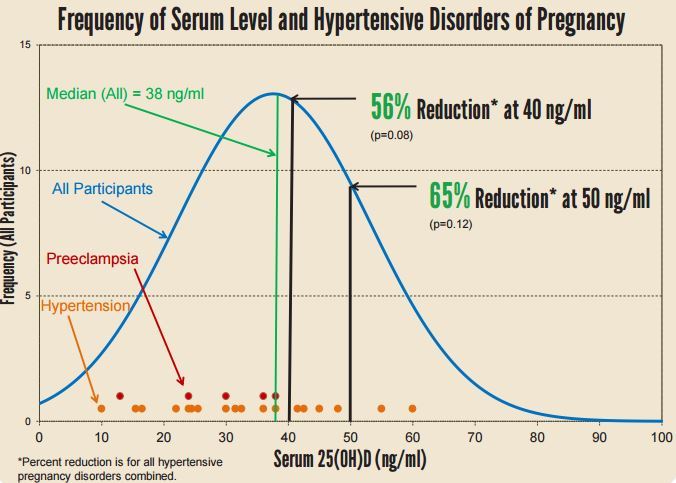Preeclampsia changes to Vitamin D Binding Protein reduces Vitamin D in placenta
Dysregulation of maternal and placental vitamin D metabolism in preeclampsia
Placenta, online 18 Dec 2016, http://dx.doi.org/10.1016/j.placenta.2016.12.019
J.A. Tamblyna, e, f, R. Susarlaa, C. Jenkinsona, L.E. Jefferya, O. Ohizuab, R.F. Chunc, S.Y. Chana, d, M.D. Kilbya, e, f, g, M. Hewisona, f, g, ,
Highlights
Activation of vitamin D is decreased and its catabolism increased in preeclampsia.
Maternal and placental vitamin D are correlated but this does not occur with decidua.
Placental accumulation of vitamin D is impaired in preeclampsia.
Placental uptake of vitamin D binding protein is dysregulated in preeclampsia.

Introduction
Epidemiology has linked preeclampsia (PET) to decreased maternal serum 25-hydroxyvitamin D3 (25(OH)D3). However, alterations in systemic and placental/decidual transport and metabolism of 25(OH)D3 during pregnancy suggest that other forms of vitamin D may also contribute to the pathophysiology of PET.
Methods
In a cross sectional analysis of normal pregnant women at 1st (n = 25) and 3rd trimester (n = 21), pregnant women with PET (n = 22), and non-pregnant female controls (n = 20) vitamin D metabolites were quantified in paired maternal serum, placental, and decidual tissue.
Results
Serum 25(OH)D3 was not significantly different in sera across all four groups. In normal 3rd trimester pregnant women serum active 1,25-dihydroxyvitamin D3 (1,25(OH)2D3) was significantly higher than non-pregnant, normal 1st trimester pregnant, and PET women. Conversely, PET sera showed highest levels of the catabolites 3-epi-25(OH)D3 and 24,25-dihydroxyvitamin D3 (24,25(OH)2D3). Serum albumin was significantly lower in normal 3rd trimester pregnant women and PET relative to normal 1st trimester pregnant women, but there was no change in free/bioavailable 25(OH)D3.
In PET placental tissue, 25(OH)D3 and 3-epi-25(OH)D3 were lower than normal 3rd trimester tissue, whilst placental 24,25(OH)2D3 was highest in PET.
Tissue 1,25(OH)2D3 was detectable in 1st trimester decidua, which also showed 10-fold higher 25(OH)D3 relative to paired placentae.
3-epi-25(OH)D3 and 24,25(OH)2D3 were not different for decidua and placenta. In normal 3rd trimester pregnant women, total, free and bioavailable maternal 25(OH)D3 correlated with placental 25(OH)D3, but this was not conserved for PET.
Discussion
These data indicate that PET is associated with
decreased activation,
increased catabolism, and
impaired placental uptake of 25(OH)D3.
